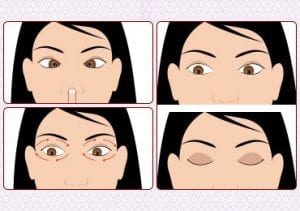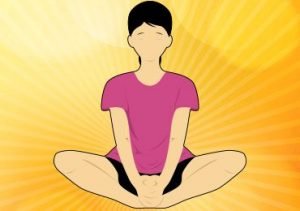Stress is that state of the body when the nervous system is overworked and is ready for a “fight” or “flight” situation. The example that is often quoted is when you are in the woods and you spot a tiger. What is the normal reaction? You try to run as fast as possible to evade the clutches of the tiger. That is the “flight” mode. The “fight” mode comes into play when you are disappointed with way things are going on and you want to voice your protests. Thus both are instances of stress. Hence, some Relaxation Techniques will help you to face that stress.
When we are stressed there are some chemical compounds called cortisol which is released in the body. Sometimes we get stressed by everyday life events which keep our body under “fight” mode continuously. This is not good for health and becomes a cause for diseases.
Signs or Indications of Stress
Stress can affect both your physical body and mental state. Some of the signs of stress are listed below.
- Regular unexplainable headaches
- Prone to infections, cold and sinus problems
- Low on energy and no enthusiasm to so anything
- All kinds of body and muscle aches
- Getting into depression
- Feeling of anxiety and nervousness
- Increased anger and frustration
- Reduced appetite for food
- Flatulence and belching
- Getting addicted to drugs, alcohol or smoking
- Losing or gaining weight without any reasons
- Insomnia or loss of sleep
The list can go on.
Mental Relaxation Techniques
1. Deep Breathing Meditation
Breathing slowly and concentrating the mind on a single aspect is one of the powerful relaxation techniques. By focusing on one thing you are trying to keep the mind away from crowding of unnecessary thoughts. You silence the mind slowly and are able to think clearly. To meditate you need to come to a comfortable position first.
- Find a convenient place to sit down and meditate. The environment should be suitable for you with less of disturbances and noises. Sit straight with your back erect.
- You can keep one of the hands on the chest while the other one on the stomach.
- Breathe in through the nose and take in as much of air as possible. Watch the stomach rise while the hand on the chest would not have moved too much.
- Exhale through the mouth and watch the stomach going in.
- Keep a count of the above movements and repeat them slowly.
Continue with the above movements for least 15 to 30 minutes every day. Meditation could have various flavors to it. You could visualize a nice soothing scene and keep the events going through your mind for a visual meditation. You could be also reciting prayers and concentrating on the sounds. Else you could be concentrating on the various body parts one by one and feeling the sensations in each part. Meditation can be done both in sitting or sleeping postures.
2. Releasing Muscle Tension
This is an easy practice to relax the whole body. The ideal position to do this would be to be lying down on your back on a mat. Remove any footwear and wear loose clothing.
- Close your eyes and practice deep breathing for 2 to 3 minutes.
- Concentrate on each part of your body. Start with the right foot and progressively move upwards till you reach the face.
- First, concentrate on your right foot and tense the muscles in that foot alone. Count till 10 and release it. You could feel the weariness going away from that foot.
- Move on to the left foot. Repeat the procedure.
- Likewise, move on to right calf muscle, left calf muscle, right thigh and left thigh.
- Focus on the buttocks, hips, abdomen, stomach, chest, neck and finally the face.
This relaxation practice releases the tension from all your muscles of the body.
3. Commit to Some Constant Activity
Just walking, trekking, cycling, swimming gets you outdoors and blocks the worries and concerns. While walking feel the sunshine and the breeze on your face. It helps to bring out the good feeling. Sometimes meeting other people on a walk or trek helps you to socialize and speak out your views. By sharing your views with others sometimes you get to see other perspectives of which you are not aware before. Also while swimming or cycling you focus on your current activity keeping your mind away from other thoughts. These activities lower depression and anxiety levels in your body making you resilient to face any stress.
4. Listening to Music
Music of your liking helps to soothe your mind and body. You could be doing some deep breathing exercises as well as listening to music. Blood pressure, heart rate, and anxiety levels are reduced as a result of this activity.
5. Yoga
Including yoga as part of your daily routine will surely help you in the long run to relax the mind and heal the body. Yogic postures when done properly address both mental and physical issues of the body. Deep breathing and watching your breath is an integral part every yoga asana. This is combined with both stationary and slowly moving postures. It helps in strengthening the mind and body. Thus it increases the endurance levels in the body. Since it addresses the complete body it is a holistic treatment. It is best learned from a teacher before you start doing it on your own.
6. Tai-Chi
Tai-Chi has its birth in Chinese martial arts. It consists of slow movements of the body all awhile concentrating on your breath. It helps you to concentrate and focus which in turn brings balance in the body. This practice can be easily followed by people of any age. It calms the nerves and thereby reduces stress in the body. Like yoga, it needs to be learned from a guru or teacher.
7. Body Massage
A good body massage helps to release the tension in the muscles and the pain. Thus a combination of strokes which knead the muscles on both the dies of the body gives you a nice feeling. Expert massagers normally two of them, one for the right side and the other on the left side can do the job simultaneously.
Effects of The Techniques
When you are stressed and undertake some of the relaxation techniques you calm your nervous system. The relaxation response you brings about physical changes in your body. They are
- Heart rate slows down.
- The blood pressure stabilizes and comes to normal.
- The body gets into healing mode and relaxes the muscles.
- Breathing slows down and becomes deeper. More of oxygen is consumed and hence increased blood flow to all the organs.
Implementation of The Techniques
Whatever Relaxation Techniques you choose to follow, should get the support of your doctor if you have some medical condition. The following tips will help you to develop relaxation responses to the various stresses you face in daily life.
- Include one or two relaxation techniques into your daily routine.
- Spend 30 minutes to one hour practicing the technique.
- Choose a convenient time which is the same everyday to follow the practice.
- Ensure that there is a proper break since you have last eaten to practice the techniques. This depends upon the technique you choose to follow. Sometimes you might have to maintain a 3-hour break.
- Select the technique which suits you best and is comfortable for you.
- Be aware of what you are doing. Try to be consistent in your efforts. Even if you miss doing it for a few days for some reasons don’t give up.
Conclusion
Including mental relaxation techniques is a good way to combat modern stresses people are exposed to today. By doing this consistently you become strong to face any adversity in life and tide over it. Keeping the mind peaceful is very important for having a healthy body.


















